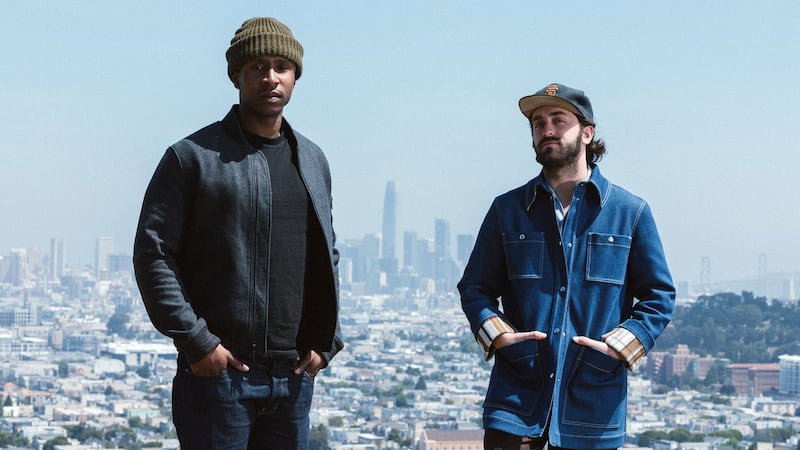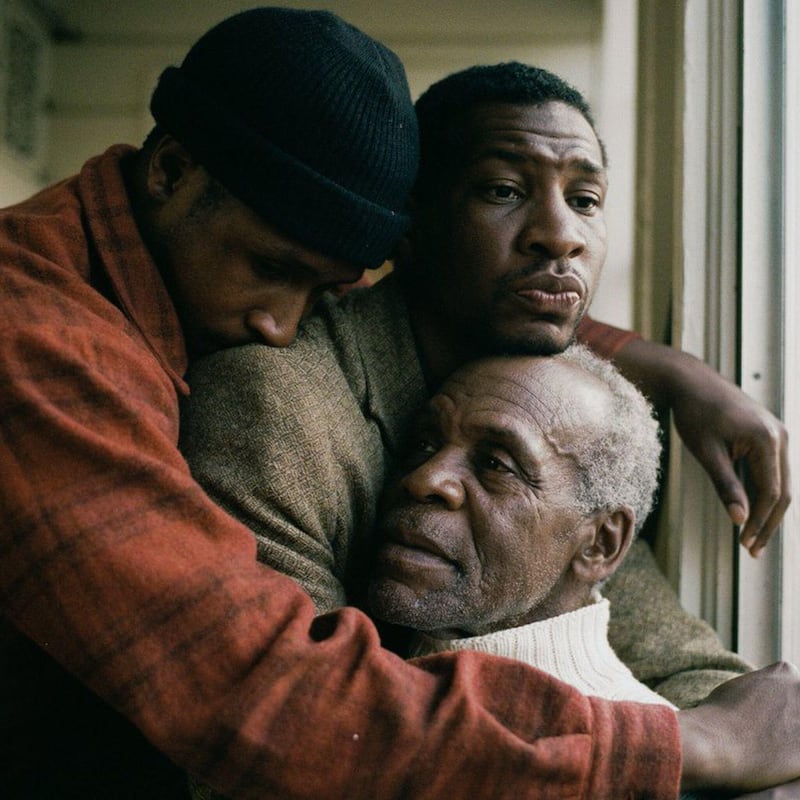Native populations are pushed out by rising rents and well-heeled interlopers; traditional social and family structures are fragmented by economic necessity; older, characterful buildings are demolished to make way for cranes and building sites. The Last Black Man in San Francisco, a moving, poetic mediation on gentrification, has nothing to do with Dublin – the clue is in the title, after all – but it has an emotional resonance that is being felt everywhere the film has premiered.
“It’s eerie,” says director and co-writer Joe Talbot. “We thought we were telling a story about San Francisco. It was only when we started touring the film and we’re in Locarno and the people there understood the movie in a way that was surprising to me. It felt like what was happening in San Francisco was unique and specific. The place was once the progressive capital of the country and it now boasts the biggest wealth gap in the country. Something about that makes it, albeit unfortunately, the perfect backdrop for this film.
“To most of the world, San Francisco looks like the liberal capital of the United States, but when you look more closely, it’s no longer the city of our memories which was full of freaks and weirdos and artists and a strong working class. And that’s part of the reason that we made it. But around the rest of the country and elsewhere, we’re hearing the same things: ‘yeah, our cities are being changed; there’s no place for us anymore’. It’s scary.”
The Last Black Man in San Francisco doesn’t look or feel like any other film this year, let alone one with major studio distribution. A heart-stoppingly beautiful piece, replete with local street performers, a very San Franciscan Greek Chorus, and wonderful turns from such noted locals as Danny Glover and Jello Biafra, Joe Talbot’s feature debut rightly received awards for Best Directing and a Special Jury Prize for Creative Collaboration at this year’s Sundance Film Festival.
To date, Oscar-watchers have it earmarked as a dark horse and the reviews have been almost universally glowing: “ravishing, haunting and exultant”, writes Manohla Dargis at the New York Times; “the best movie of the year” by the reckoning of Rolling Stone; “. . . glides from moment to meaningful moment with cumulative power and singular grace,” says Joe Mergenstern at the Wall Street Journal.
It’s a special film with a special history. Joe Talbot and Jimmie Fails – The Last Black Man in San Francisco’s charismatic lead – have been firm friends since they bonded over movies and skating as 10-year-olds. Joe, the son of New Yorker columnist Margaret Talbot and Salon founder David Talbot (and grandson of TV and Plan 9 From Outer Space star Lyle Talbot), has been making films starring Jimmie since they were in high school.
“We’ve known each over half our lives at this point,” says Talbot. “Every time someone tells me, ‘Oh, Jimmie is fantastic in the film’, it takes me back to hearing that from a high school teacher for the first time. Because that was the very first time with someone outside of our families recognised Jimmie’s talent. And now that idea is cemented with everyone. It just so happens that we both love storytelling and came from the same neighbourhood. And we’ve always had this relationship where we could be vulnerable with one another in a way that we aren’t necessarily with other people.”

The Last Black Man in San Francisco is a doc-fiction hybrid, containing plot beats taken from Fails own life, as well as that of other locals, some of whom contributed to the development. The main storyline concerns Fails’s character – also called Jimmie Fails – trying to repossess his family’s Victorian-built ancestral home in the once predominantly black middle-class Fillmore district.
In real life, Fails lived in a similar house, one that his grandfather had bought, until he was three years old. After his grandfather died, his family fell into a financial crisis and the house was foreclosed because his relatives could not afford to keep up repayments.
“My parents are both writers and they’ve been lucky enough to do, for the most part, what they wanted to do,” says Talbot. “Although they’ve both, my Mom especially, had to take many jobs they weren’t crazy about. But they created this artistic home and they bought a house the last time it was affordable to buy a house in San Francisco: in the early 90s.
“Now, they’re barely holding on to the house. Jimmie and I could not have lived on our own and in San Francisco and make this movie unless we lived at my parents’ house. So that became intimate place we would gather to work. My parents have both written books in that house. I think about losing that place and I think it would just throw off my entire sense of self and I’m an adult.
“When I think of what that did to Jimmie as a kid, it’s incredibly disorienting. That house was the last time he had his family huddled under one roof. All of them were dispersed afterwards. Very few remained in San Francisco. Home is more than four walls and a roof. It becomes a part of who you are; it’s only when you lose that when you begin to realise that.”
Foster care and public housing
Fails spent the remainder of his childhood in foster care and public housing. At one point he lived in a car with his dad, a vehicle that features in the film.
“We like to keep which parts are biographical and which parts aren’t vague,” says the director. “Everything Jimmy says is emotionally true, but some instances are pulled straight from real life. Like the character that Mike Epps plays in the car who denies that he ever stole the car: that is based on a real character who did drive off with the car that Jimmie and his dad were sleeping in at one point. The way Jimmie describes it: ‘he drove off at my house’. So in a movie we took a comedic approach because that’s the way Jimmie tells that story. We tried to translate that.”
It’s something of a cliche to talk about a city or a house being a character in its own right, but the contested house at the heart of the film is an extraordinary building, if not actually the one where Jimmie Fails was born. Key features of the $5 million, 1889-built mansion, especially the witch-hat roof, the red window sills, and the huge pipe organ, are incorporated into the plot of the film.

“Jimmie jokes that the film is a love story between a man and a house, so you want a love interest that feels worthy of his desire and love,” says Talbot. “We spent years looking for this house. The tragedy of San Francisco, as played out in the film, is that in real life, if you walk into an old Victorian house, they’ve ripped out the interiors and replaced them with granite table tops and open plan floors. The facade is preserved but nothing more.
“Finally, I remembered when I used to go to school with my mom, we would pick out dream houses along the way. This was one of those houses that was in the Mission not far from where I grew up. So we knocked on the door and this old man, to our surprise, invited us in. Turned out he was a longtime San Franciscan and he’d done a lot of the work on the house himself. He had built the witch hat shingle by shingle and restored the organ.
“His name is also Jim. So he and Jimmie had had some weird cosmic connection as people who love old Victorians. He taught Jimmie the proper way to paint the house and some of the details you seen the film, so I think the Spirit of Jim Tyler, the homeowner, is in the movie and we were lucky to have him.”
Fails and Talbot first began making short movies together during high school, but producers weren’t keen to back either the untested Fails or high-school dropout Talbot with a project that’s as closely related to a tone poem as it is a blockbuster.
A gorgeous proof-of-concept trailer, an equally appealing website, a successful Kickstarter campaign (almost 1,500 contributors totalling nearly $80,000), a huge amount of local interest and backing from Brad Pitt’s production company Plan B and the voguish A24 made all the difference.
“What started as a story developed by two friends really became a massive undertaking by a group of really smart people,” says Talbot. “Something I heard a lot is that everybody in Hollywood wants to be second. Nobody wants to set trends; they want to follow them. A24 and Plan B had taken a risk on Barry Jenkins the year before we came along, and that obviously turned out well. They have the reputation they have, not just because they’ve taken risks, but because they care about movies, which shouldn’t be novel but it is.”
Both Talbot and Fails initially conceived of the film as a Dear John to their native city. They’re still processing, says the director.
“We wrote the movie as a break-up letter,” says Talbot. “The first draught was angry. But by the fifth draught or the sixth draught, it was more empathetic. We tried to be more vulnerable than hateful or angry. We anticipated that after the movie premiered we would have worked through all these feelings. But after the movie premiered in San Francisco, local people started writing to us, saying: ‘I ran out of the theatre and started painting again for the first time in years’. The city used to be a haven for artists, now it’s the most expensive place to live in the country, but there are still artists that are somehow surviving against all odds. People really rallied around the film, and that wonderful response from the city makes it even harder to break up with it.”
The Last Black Man in San Francisco is out on October 25th













